Waxwings
Waxwings are medium-sized songbirds which forage in flocks for berries. Two species, Bohemian Waxwings and Cedar Waxwings, visit the forests around the Lake. Both have a square tail with a terminal yellow band.
Although found over wide swaths of North America, the wandering flocks only make episodic appearances at any one place before moving on in their perpetual search for berries. The Bohemian Waxwing is uncommon to absent around the Lake except in the winter. The same is true of the Cedar Waxwing, except that it makes its appearance in the summer.
Waxwings gain their name from tiny flattened red nodules at the tips of the adult bird’s secondaries (the flight feathers of the inner wing). When the wings are folded, the shorter secondaries overlie the longer primaries and these red spots appear halfway along the wing. As the red nodules are small and only appear on the adult bird, they don’t serve as the most useful identifying mark. But, the bird’s crest—looking like a backwards baseball cap—is easy to spot.
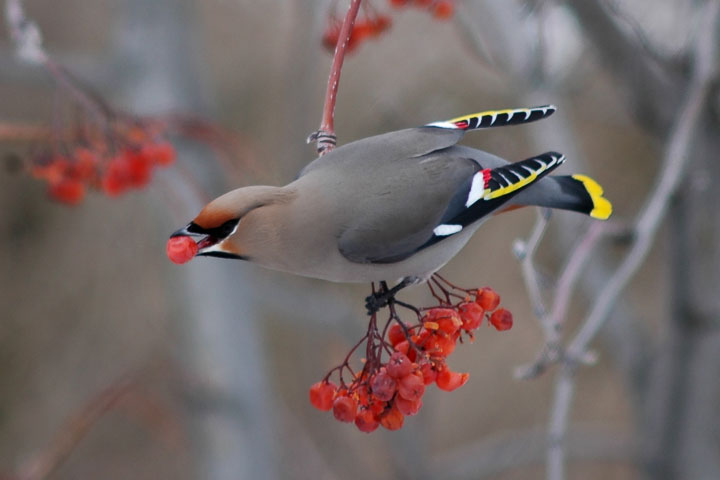 A Bohemian Waxwing scrounges berries from the mountain ash in February. The red spots (the eponymous wax) are visible halfway along its wings.
A Bohemian Waxwing scrounges berries from the mountain ash in February. The red spots (the eponymous wax) are visible halfway along its wings.  LVD.
LVD.
 When the Bohemian Waxwing appears, it comes in numbers. This flock, which briefly settling on a treetop, contained three or four dozen members. A few moments later, they all moved on.
When the Bohemian Waxwing appears, it comes in numbers. This flock, which briefly settling on a treetop, contained three or four dozen members. A few moments later, they all moved on.
The bumps on the wrists of the airborne bird are called alulae (Latin for little wing). While not normally opened, they can be extended to improve lift at low speeds, such as when the bird is coming in for a landing.
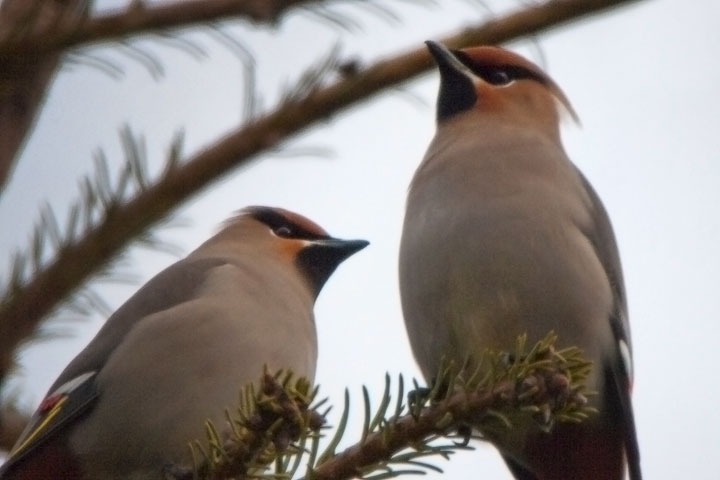 Bohemian Waxwings
Bohemian Waxwings
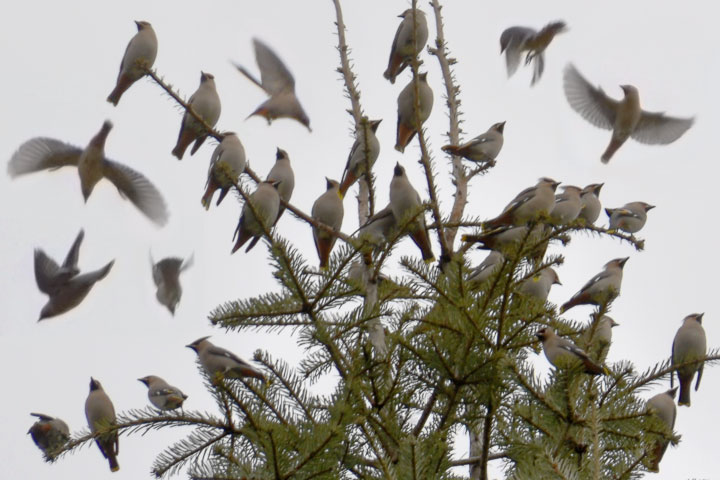 A cornucopia of Bohemian Waxwings
A cornucopia of Bohemian Waxwings
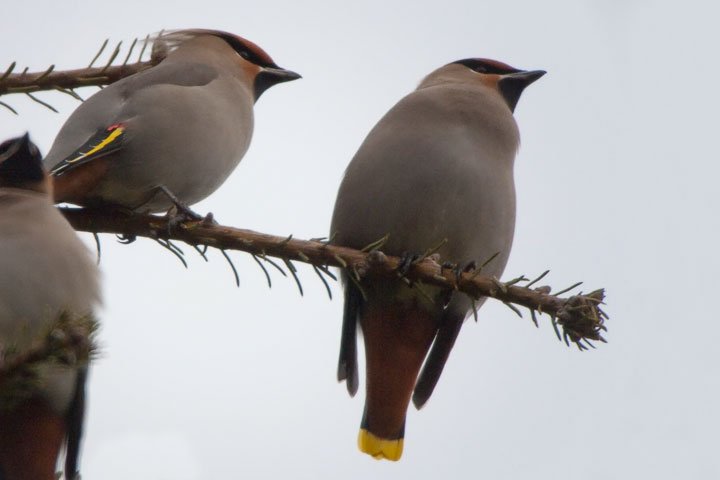 Bohemian Waxwings
Bohemian Waxwings
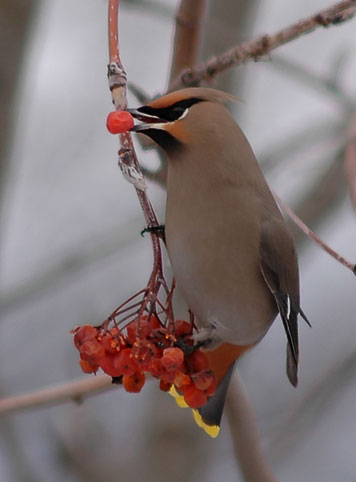 The crest of the Bohemian Waxwings looks like the peak of a backwards baseball cap.
The crest of the Bohemian Waxwings looks like the peak of a backwards baseball cap.  LVD.
LVD.
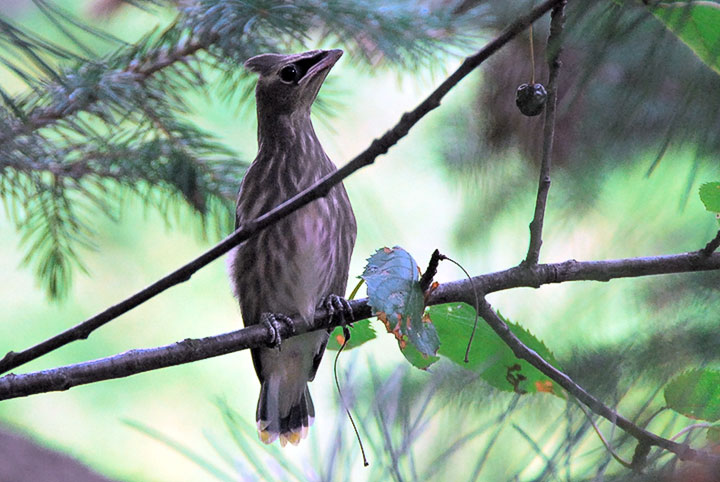 The Cedar Waxwing is a summer visitor to the Lake. This one is a juvenile; it has yet to gain its yellowish hues. Cedar Waxwings feed on berries, and this one is exploring a cherry tree.
The Cedar Waxwing is a summer visitor to the Lake. This one is a juvenile; it has yet to gain its yellowish hues. Cedar Waxwings feed on berries, and this one is exploring a cherry tree.
 A Cedar Waxwing is a summer species. It is smaller and browner than its cousin and winter species the Bohemian Waxwing.
A Cedar Waxwing is a summer species. It is smaller and browner than its cousin and winter species the Bohemian Waxwing. Doug Thorburn.
Doug Thorburn.
Information from Wikipedia: Waxwings.
![]()